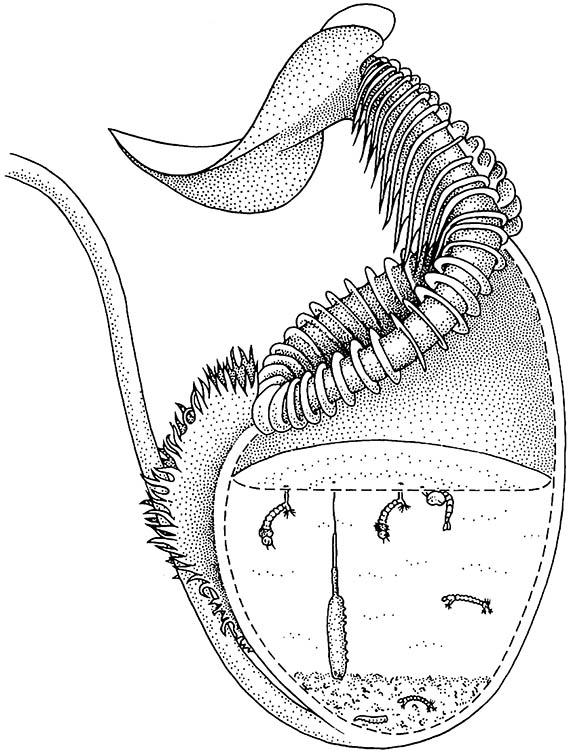11.4.2. Phytotelmata: plant-held water containers
Many plants support insect communities in structures that retain water. The containers formed by water retained in leaf axils of many bromeliads (“tank- plants”), gingers, and teasels, for example, or in rot-holes of trees, appear incidental to the plants. Others, namely the pitcher plants, have a complex architecture, designed to lure and trap insects, which are digested in the container liquid (Fig. 11.12).
The pitcher plants are a convergent grouping of the American Sarraceniaceae, Old World Nepenthaceae, and Australian endemic Cephalotaceae. They generally live in nutrient-poor soils. Odor, color, and nectar entice insects, predominantly ants, into modified leaves — the “pitchers”. Guard hairs and slippery walls prevent exit and thus the prey cannot escape and drowns in the pitcher liquid, which contains digestive enzymes secreted by the plant.
This apparently inhospitable environment provides the home for a few specialist insects that live above the fluid, and many more living as larvae within. The adults of these insects can move in and out of the pitchers with impunity. Mosquito and midge larvae are the most common inhabitants, but other fly larvae of more than 12 families have been reported worldwide, and odonates, spiders, and even a stem-mining ant occur in south-east Asian pitchers. Many of these insect inquilines live in a mutualistic relationship with the plant, digesting trapped prey and microorganisms and excreting nutrients in a readily available form to the plant. Another unusual pitcher plant associate is a Camponotus ant that nests in the hollow tendrils of the pitcher plant Nepenthes bicalcarata in Borneo. The ants feed on large, trapped prey or mosquito larvae, which they haul from the pitchers, and thereby benefit the plant by preventing the accumulation of excess prey, which can lead to putrefaction of pitcher contents.

(clockwise from the top left) two mosquito larvae, a mosquito pupa, two chironomid midge larvae, a small maggot, and a large rat-tailed maggot.

